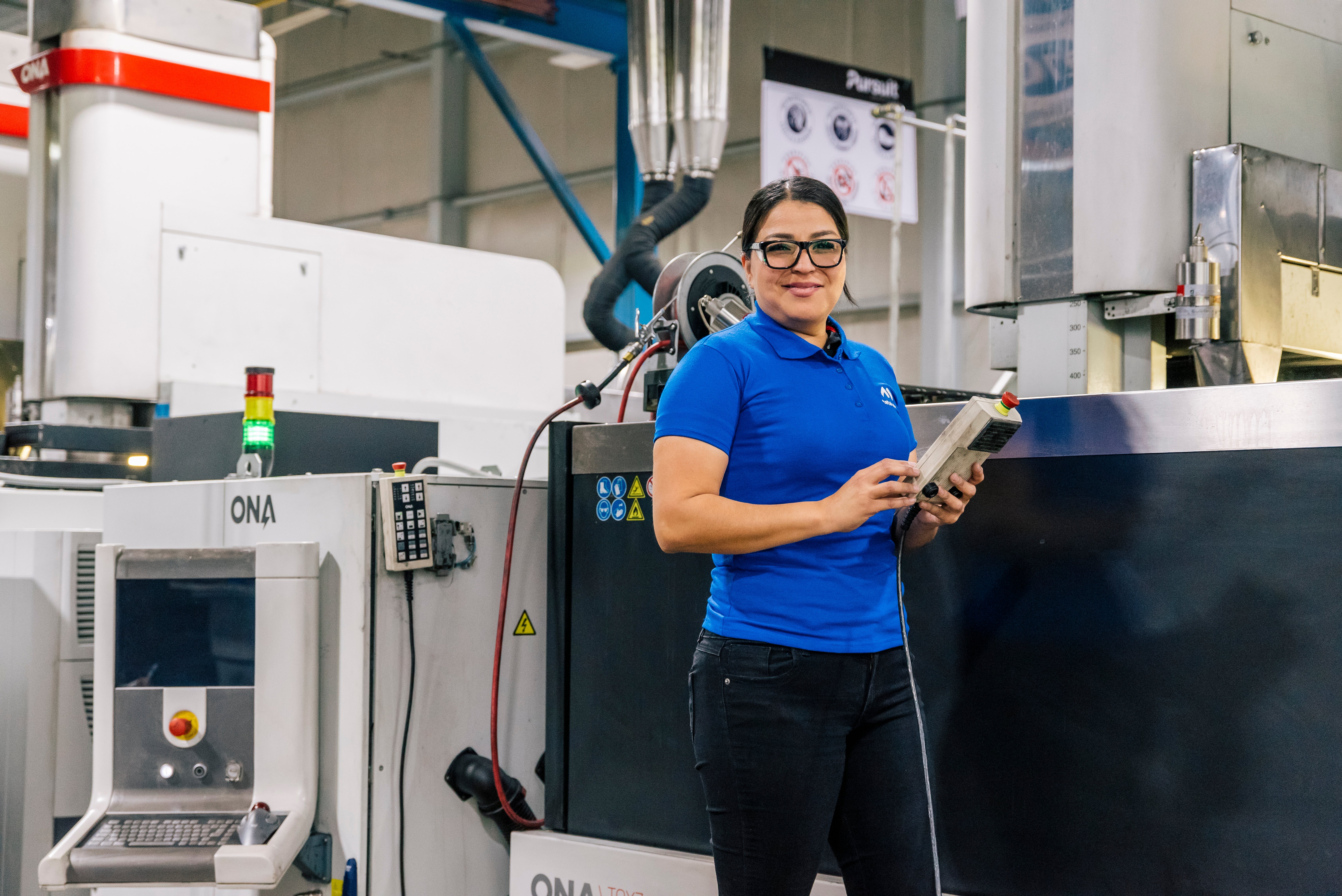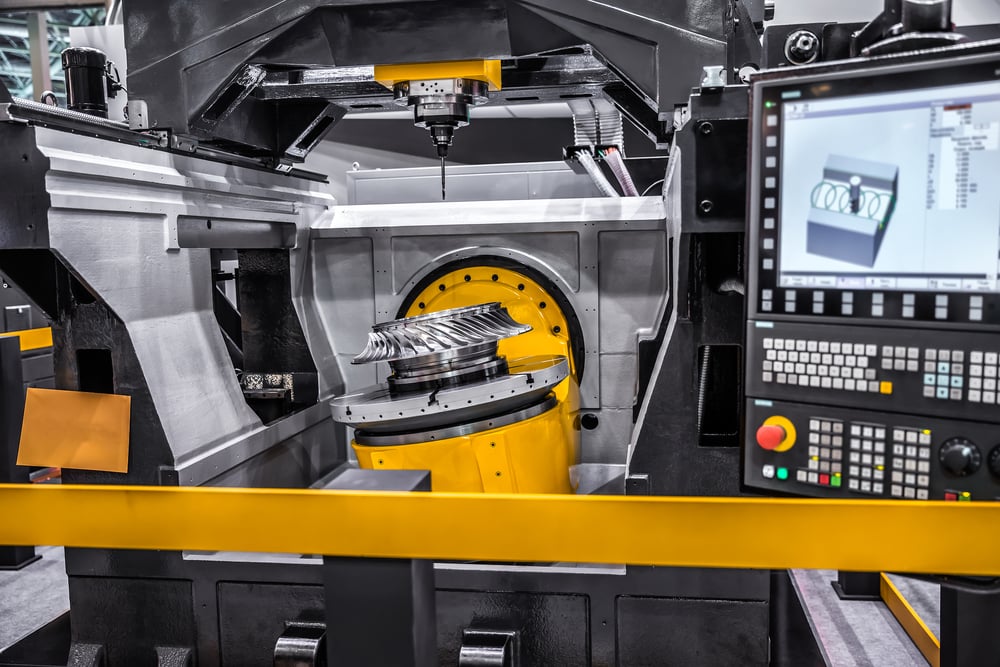In 2018, Mexico exported more than $1 billion in aircraft components, making it the 12th leading aerospace exporter globally and the fourth biggest aircraft component supplier to the United States. While there were clear opportunities for building up the aerospace supply chain in Mexico at that time, 2020 seemed to change that. After all, record numbers of flights have been grounded as a result of the pandemic, and airlines are experiencing record revenue losses.
In truth, however, aircraft needs have shifted rather than stopped. What’s more, this supply chain disruption has identified clear needs—and clear opportunities for investment. The need for a balance of cost-cutting measures, a more regionalized supply chain, and flexible production presents Mexico as an ideal solution to today’s aerospace supply chain challenges.
In a Sept. 2020 interview with Mexico Business News, Felipe Sandoval, president of the Mexican Federation of Aerospace Industries (FEMIA), commented that the challenges brought about by 2020 have led to “a golden opportunity.” As Sandoval puts it, “It is not a volatile industry but a long-term investment that will only get stronger.”
Short-term aerospace supply chain needs
There is no question that the aviation industry is facing unique challenges today, but the downturn in passenger travel is highlighting some specific needs. In the near future, the aerospace manufacturing industry can expect to see component demand targeted across the following specific niches.
Maintenance supply
With two-thirds of passenger aircraft grounded in 2020, many aviation organizations are considering using this time for maintenance. However, these efforts have been hampered by a lack of spare parts due to travel restrictions and supply chain chokepoints. As air travel begins to increase somewhat, airlines may need to perform significant maintenance, repair, and overhaul (MRO) work on aircraft that have sat idle.
“[Airlines] have to go through full checks, and we expect will be a tremendous amount of movements of spare parts, and also a significant number of engines going to the MRO shops so they will actually be able to fly again,” predicts Mads Ravn, the U.S.-based head of global air freight procurement at DSV Air & Sea.
For its part, FEMIA is supporting the greater development of MRO capabilities in Mexico. This will help support local players such as Safran, which has facilities in Queretaro, Chihuahua, and Mexico City. However, Sandoval suggests that Mexico has significant potential to do more in this area due to its proximity to the world’s largest aircraft fleet. Component suppliers able to support parts demand can expect to stay busy in the months ahead.
Cargo support
Passenger travel may be down, but airlines also transport more than 52 million metric tons of goods each year, representing more than 35% of global trade by value. Roughly half of that cargo is typically transported by passenger aircraft, leaving many airlines now scrambling to fill the gap between cargo demand and available lift. This has included re-introducing freighter services and using passenger aircraft for cargo operations.
Boeing’s 2020 World Air Cargo Forecast predicts demand growth of 4% per year over the next 20 years, including demand for B767 freighters. Through 2040, Boeing projects that airlines will need 2,430 additional cargo aircraft, including 930 new widebodies, as well as the conversion of approximately 1,500 jets from passenger to cargo aircraft. That’s going to drive up demand for new players in the aerospace supply chain.
Helicopter components
Yorann Marc, projects department manager for transport and logistics group Bolloré, forecasts that the helicopter manufacturing sector will resume the production of new models prior to the commercial aviation sector at large. It’s a forecast that others share since defense spending has remained stable in some regions and increased in others. Mordor Intelligence, for example, is projecting a 3% increase in CAGR for military rotorcraft from 2020 through 2025 in response to the need to replace aging rotorcraft and increases in defense spending from several countries.
Support for net zero goals
As Paul Everitt, chief executive of the British trade group ADS, told Reuters, decades of regular increases in air passenger travel had driven demand “for modern, quieter, more fuel-efficient aircraft.” Despite a drop in air travel today, the British commitment to net-zero energy aviation by 2050 may actually drive greater demand for component innovation and manufacturing as aircraft is retooled in the years to come. A shift to alternative fuel options, including SAF and hydrogen, will require new engine components and suppliers to make them.
Redeveloping aerospace industry to support long-term needs
Without a doubt, the aviation industry will need to absorb losses, and cutting costs through low-cost manufacturing strategies will play a role here. What makes the Mexico market even more attractive as a low-cost manufacturing center, however, is the fact that major manufacturers are shifting their aerospace supply chains to revolve around regional blocks. This will help aerospace component suppliers to pivot more rapidly to serve customers and move through supply chain disruptions.
As Sandoval explains, “The U.S is pushing to develop its supply chain in North America in order to better integrate its manufacturing practices. Mexico is the ideal candidate to replace remote countries such as China and strengthen the U.S. supply chain.”
According to Bill Alrich, customer solutions representative for supply chain network consultant Elemica, the pressure to reduce costs and innovate is also driving more aerospace companies to further outsource and extend their supply chains. He sees 70% of the value of finished products coming from external manufacturers. For Alrich, this greater reliance on component outsourcing makes supply chain quality management a critical factor for the aerospace industry. This is yet another area where Mexico can lead. The country’s history in supporting the aerospace supply chain has given it a reputation for providing quality parts.
Sandoval suggests that Mexico’s aerospace industry should focus on improving component manufacturing processes, to embrace the high quality, zero waste principles already employed by the automotive industry in order to further lower costs. The good news here, he notes, is that Mexico’s strong experience in automotive manufacturing is translatable. In fact, this is how many economic clusters have grown across Mexico. In automotive manufacturing, for example, strength in component manufacturing has built up dense supply chains, including the supportive electronics components, which in turn began strengthening the know-how for producing electronics components used in a broader range of applications.
Finally, meeting this higher aerospace component demand will require denser supply chain support in Mexico. Sandoval notes that the aerospace industry arrived suddenly in Mexico and grew fast, but the local industry still needs to catch up to this growth. Today, approximately 3% of the aerospace components manufactured in the country are fully sourced in Mexico, indicating gaps in materials and components that new companies can fill. Among these gaps, Sandoval says, is the need for suppliers of primary commodities, including forging, casting, and raw materials such as specialized nickel-steel alloys.
Identifying the right opportunity
Mexico already has well-defined aerospace clusters, with various types of manufacturing largely focused in Sonora, Baja California, Chihuahua, Nuevo Leon, and Queretaro. It has the infrastructure and workforce training in place to support this robust industry. And while this sector has grown rapidly, there is room for additional support through every level of Mexico’s aerospace supply chain.
Whether your company is looking to diversify its product capabilities or global footprint, Mexico offers ample opportunity for growth. The next step is to find the right site to maximize your opportunity for growth. If you’re ready to explore that next step, Tetakawi can help. Contact us today.
Subscribe
Sign up and stay informed with tips, updates, and best practices for manufacturing in Mexico.





